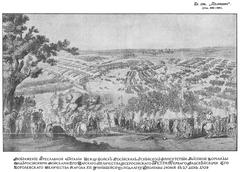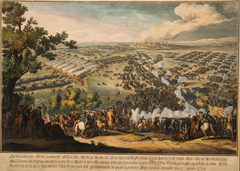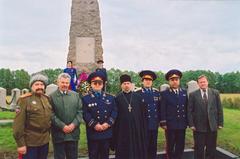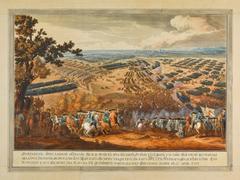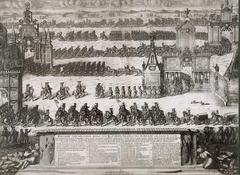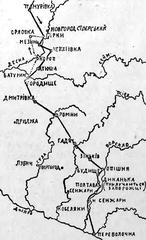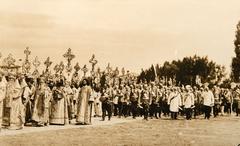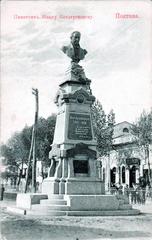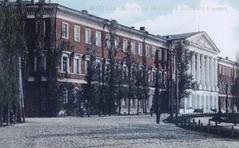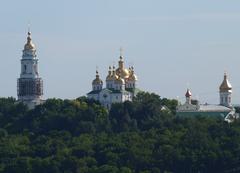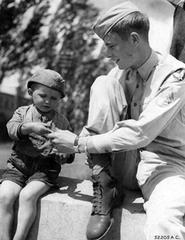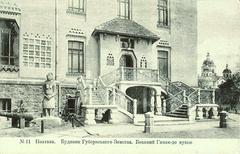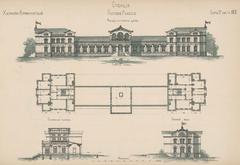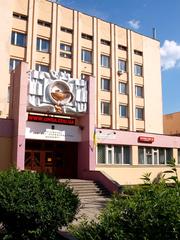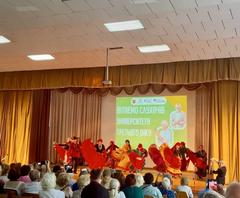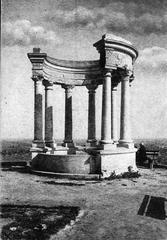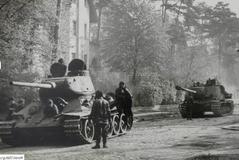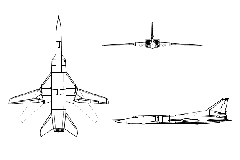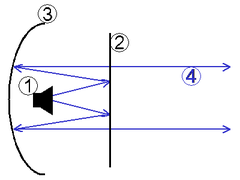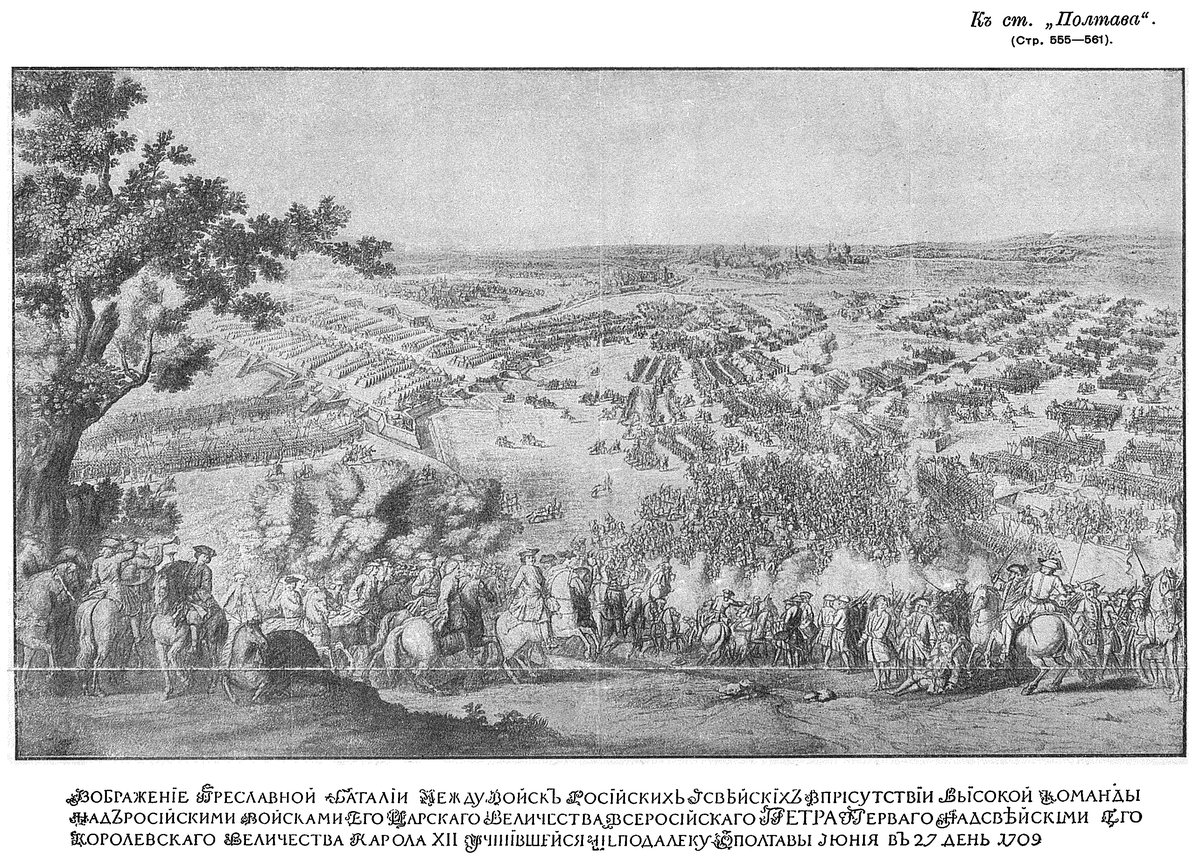
Battle of Poltava Site: Visiting Hours, Tickets, and Historical Significance in Poltava, Ukraine
Date: 14/06/2025
Introduction
The Battle of Poltava, fought on June 27 (Julian calendar) / July 8 (Gregorian calendar), 1709, stands as a watershed event in European and Ukrainian history. This decisive confrontation during the Great Northern War signaled the downfall of Sweden as a dominant Baltic power and secured Russia’s ascendancy under Tsar Peter the Great. The battle’s outcome dramatically shifted the geopolitical landscape of Northern and Eastern Europe and had profound consequences for Ukraine’s autonomy and identity. Today, the well-preserved battlefield near Poltava, Ukraine, along with its museums, monuments, and annual reenactments, offers a compelling opportunity to explore 18th-century military history and Ukrainian cultural heritage.
This guide delivers detailed information on the historical background, visiting hours, ticketing, accessibility, and nearby attractions at the Battle of Poltava site. Whether you are a history enthusiast, researcher, or traveler, this resource will help you plan a meaningful and educational visit. For further details, consult the Battle of Poltava Museum website and the Poltava tourism portal.
Historical Overview of the Battle of Poltava
The Battle of Poltava was a turning point in the Great Northern War (1700–1721), wherein a coalition led by Russia challenged Sweden’s dominance in the Baltic region. King Charles XII of Sweden, after initial successes, launched an ambitious invasion of Russia in 1708. However, his army suffered devastating losses during the harsh winter, and by spring 1709, Charles laid siege to Poltava with a depleted force of about 17,000 men (Britannica, English Curiosity).
Poltava’s strategic location on the Vorskla River made it a key gateway to Ukraine and the heartlands of Russia. Ukrainian Hetman Ivan Mazepa allied with Charles XII, seeking to secure greater autonomy for Ukraine, but his support was limited. The Russian army, numbering over 80,000 and modernized by Peter the Great, constructed extensive fortifications, forcing the Swedes into a costly assault. The Russian counterattack, led by Tsar Peter and Prince Menshikov, resulted in a decisive victory. Charles XII fled, Sweden’s era as a major power ended, and Russia’s influence surged (Mexico Historico).
For Ukraine, the defeat marked the beginning of tighter Russian control and the curtailment of local autonomy, embedding the battle deeply in national memory and identity.
Visiting the Battle of Poltava: Practical Information
Location and Accessibility
The Battle of Poltava site is located approximately 7–10 km from Poltava’s city center, easily reachable by car, taxi, or public transport. Clear signage and ample parking are available. The main entrance to the State Historical and Cultural Reserve “Field of the Battle of Poltava” leads to the battlefield, museums, and monuments (visitpoltava.com).
- Taxi: Quick and affordable, with fares around 100–150 UAH ($2.50–$4 USD).
- Public Transport: Local buses and marshrutkas serve the route; check schedules in advance.
- By Car: Parking is available at the museum entrance.
Opening Hours and Tickets
- Museum of the History of the Poltava Battle:
- Hours: Tuesday to Sunday, 9:00 AM–5:00 PM; closed Mondays. Last admission is typically 30 minutes before closing. Opening hours may change on public holidays (trip.com).
- Tickets: Adult admission is 100–150 UAH ($2.50–$4 USD); discounts are available for students, children, and seniors. Guided tours incur an additional fee.
- Battlefield and Open-Air Reserve: Open daily from 9:00 AM–6:00 PM; admission to the grounds is free, but some exhibitions and guided tours may require tickets (discover-ukraine.info).
Accessibility
- Museum: Wheelchair accessible with ramps and adapted restrooms.
- Battlefield: Main paths are paved, but some areas are grassy or uneven; mobility assistance may be necessary.
- Guided Tours: Available in Ukrainian, Russian, and English (advance booking recommended for English tours).
- Facilities: Restrooms, a café, and a gift shop are located at the museum.
Guided Tours and Visitor Experience
Guided tours (in multiple languages) provide in-depth insights into the battle’s strategy, participants, and long-term consequences. Audio guides and virtual tours are also available.
Best Time to Visit
- Season: Late spring to early autumn (May–September) offers pleasant weather and coincides with annual reenactments and festivals.
- Events: The anniversary reenactment around June 27 is a highlight, featuring costumed performances and military demonstrations (things.in).
The Battlefield Today: Museums, Monuments, and Attractions
Museum of the History of the Battle of Poltava
The museum, established in 1909, houses over 6,000 artifacts, including weapons, uniforms, maps, and archival documents. Key features include:
- Cossack Hall: Focused on the Ukrainian Cossacks’ role.
- Diorama Hall: A panoramic painting depicting the battle.
- Guided Tours: Available in several languages with prior booking (battle.poltava.ua).
Key Battlefield Monuments and Memorials
- Monument to the Glory of Poltava: A 70-meter column in the city center featuring St. George slaying a dragon, commemorating the Russian victory. Open during daylight hours; no ticket required (wildtrips.net).
- Arch of Reconciliation: Erected in 2009, symbolizing healing and unity among former adversaries. Open year-round (unalteredhistory.blogspot.com).
- Monument to the Defenders of Poltava and Commandant A.S. Kelin: Honors the city’s defenders; accessible year-round (audiala.com).
- Monument to the Swedes: Commemorates Swedish casualties, located near the battlefield and open at all times (wanderlog.com).
Battlefield Features and Walking Routes
The reserve features marked walking trails, reconstructed redoubts, graves of Swedish soldiers (Shvedska Mohyla), and interpretive signs in multiple languages. These provide context on the battle’s tactics and the human cost of war.
Nearby Historical and Cultural Attractions
- Khrestovozdvyzhensky Monastery: An early 18th-century Baroque complex that survived the battle and remains a significant religious site (lonelyplanet.com).
- Spaska Church: Dating from 1705, renowned for its architecture and historical significance.
- Poltava Regional Museum: Offers exhibits on local archaeology and history, complementing the battlefield experience (wildtrips.net).
- Ivan Kotlyarevsky Literary Museum: Highlights Poltava’s literary heritage.
- Poltava Museum of Long Range and Strategic Aviation: Showcases military aircraft and aviation history.
Cultural Insights: Traditions, Festivals, and Cuisine
- Annual Reenactments: Held in June, these events include costumed battles, music, and educational programs.
- Poltava Dumpling Festival: A celebration of varenyky (dumplings), folk music, and local cuisine.
- Ivan Kotlyarevsky Festival: Honors the famous Ukrainian writer with theater and literary events.
- Local Cuisine: Traditional dishes like varenyky, borscht, and holubtsi can be sampled in city restaurants, often accompanied by live folk music.
Visitor Tips
- Dress Appropriately: Wear comfortable shoes for walking and dress in layers.
- Photography: Allowed throughout the site; use hashtags like #BattleOfPoltava for sharing.
- Respect Memorials: Observe moments of silence at burial sites and during ceremonies.
- Best Time: Visit in late spring or early autumn for optimal weather and event access.
Frequently Asked Questions (FAQ)
Q: What are the museum and battlefield visiting hours?
A: Museum: Tuesday–Sunday, 9:00 AM–5:00 PM; battlefield reserve: daily, 9:00 AM–6:00 PM.
Q: How much are tickets?
A: Museum admission is 100–150 UAH ($2.50–$4 USD); battlefield entry is free.
Q: Are guided tours available in English?
A: Yes, with advance booking.
Q: Is the site accessible for people with disabilities?
A: The museum and main paths are accessible; some battlefield areas are uneven.
Q: When are reenactments held?
A: Annually around June 27, marking the battle’s anniversary.
Visual and Media Resources
For a deeper experience, view high-quality images, virtual tours, and maps on the official museum website and Poltava tourism portal. Suggested image alt text includes: “Battle of Poltava historical site,” “Poltava museum exhibits,” and “Battlefield monuments in Poltava.”
Summary and Visitor Recommendations
The Battle of Poltava site is a vital destination for those seeking to understand Eastern Europe’s historical evolution. Its comprehensive museum, evocative monuments, and engaging annual events offer an immersive exploration of a conflict that reshaped nations. The site is accessible and visitor-friendly, with guided tours, educational signage, and a rich program of reenactments and festivals.
Combine your battlefield visit with Poltava’s wider cultural offerings—from monasteries and museums to culinary festivals—for a memorable journey into Ukraine’s heritage. For planning, use the Museum of the History of the Battle of Poltava and local tourism resources. Engaging with Poltava’s past also supports the preservation of a shared European remembrance and the ongoing dialogue of reconciliation (Britannica, English Curiosity, Mexico Historico).
Sources and Further Reading
- Battle of Poltava | Britannica
- The Battle of Poltava | English Curiosity
- The Impact of the Battle of Poltava on Ukraine’s History | Mexico Historico
- Poltava Battlefield | Lonely Planet
- Top 10 Attractions in Poltava | Wild Trips
- Poltava Historical Data | VisitPoltava
- Museum of the History of the Poltava Battle (English)
- The Field of the Battle of Poltava | Discover Ukraine
- Glory Monument in Poltava | Audiala
